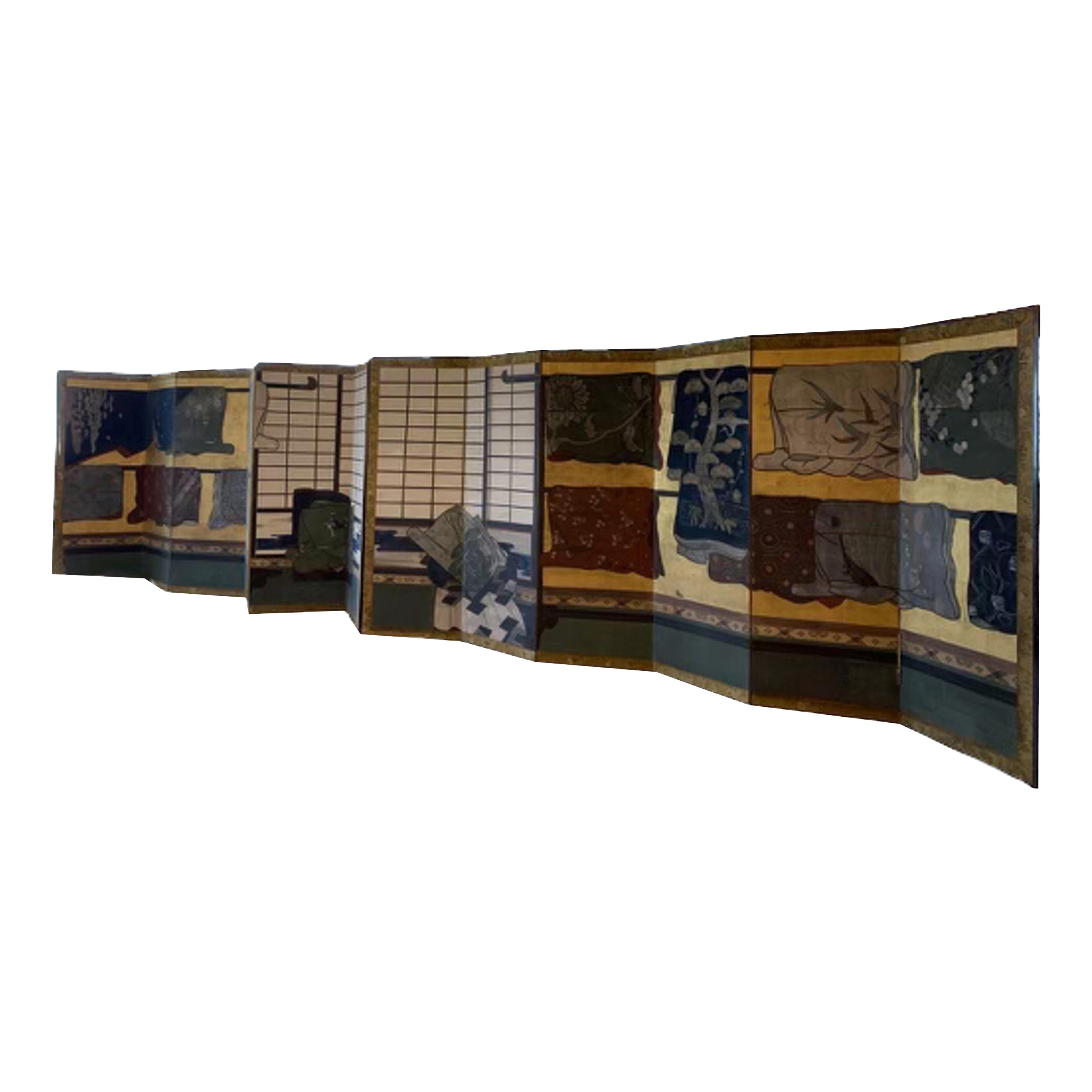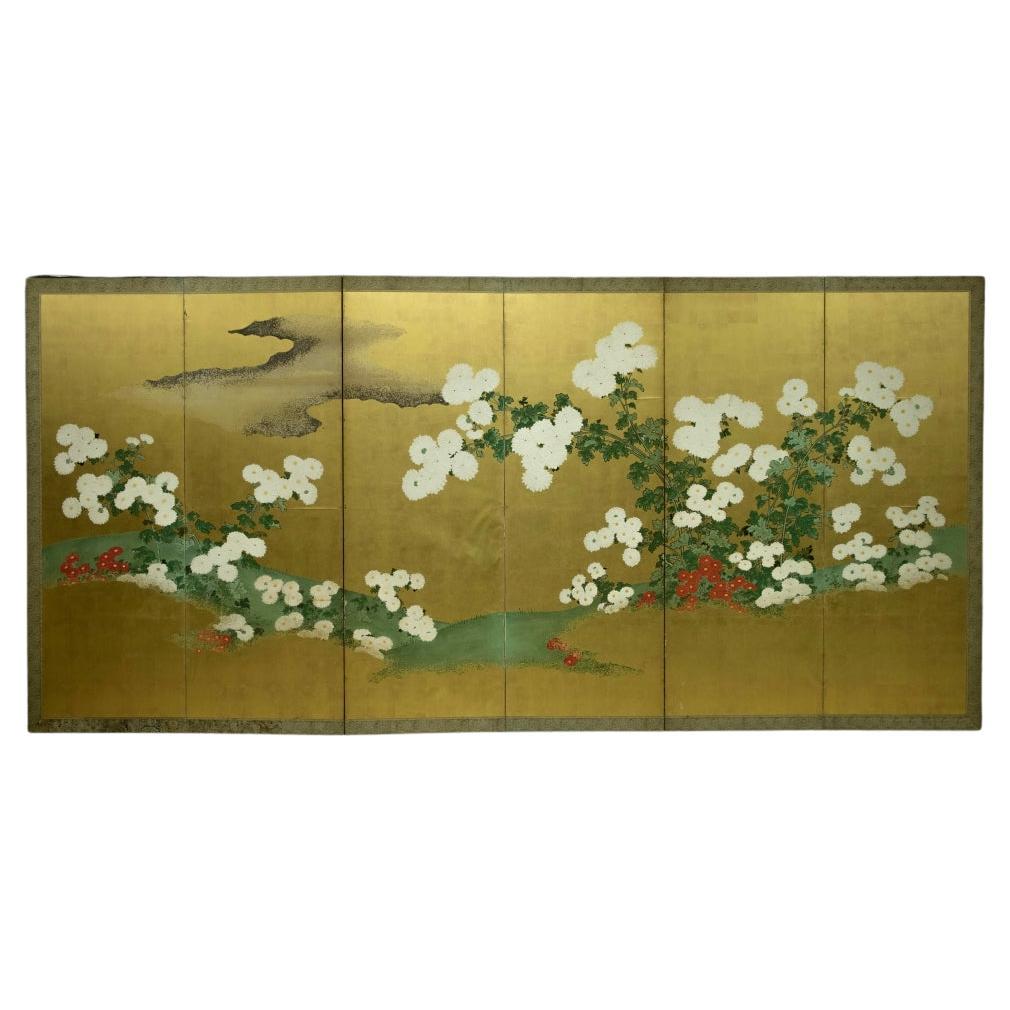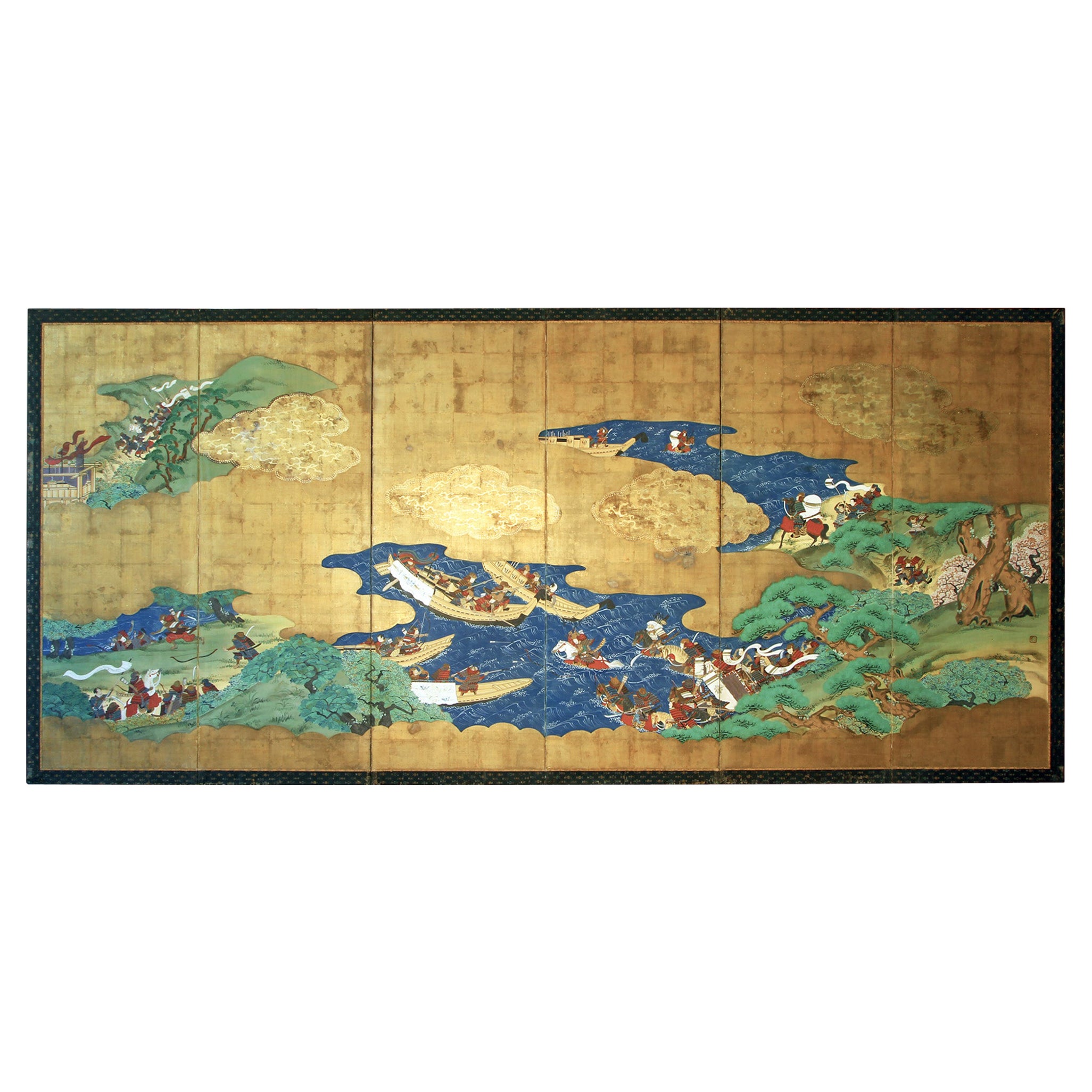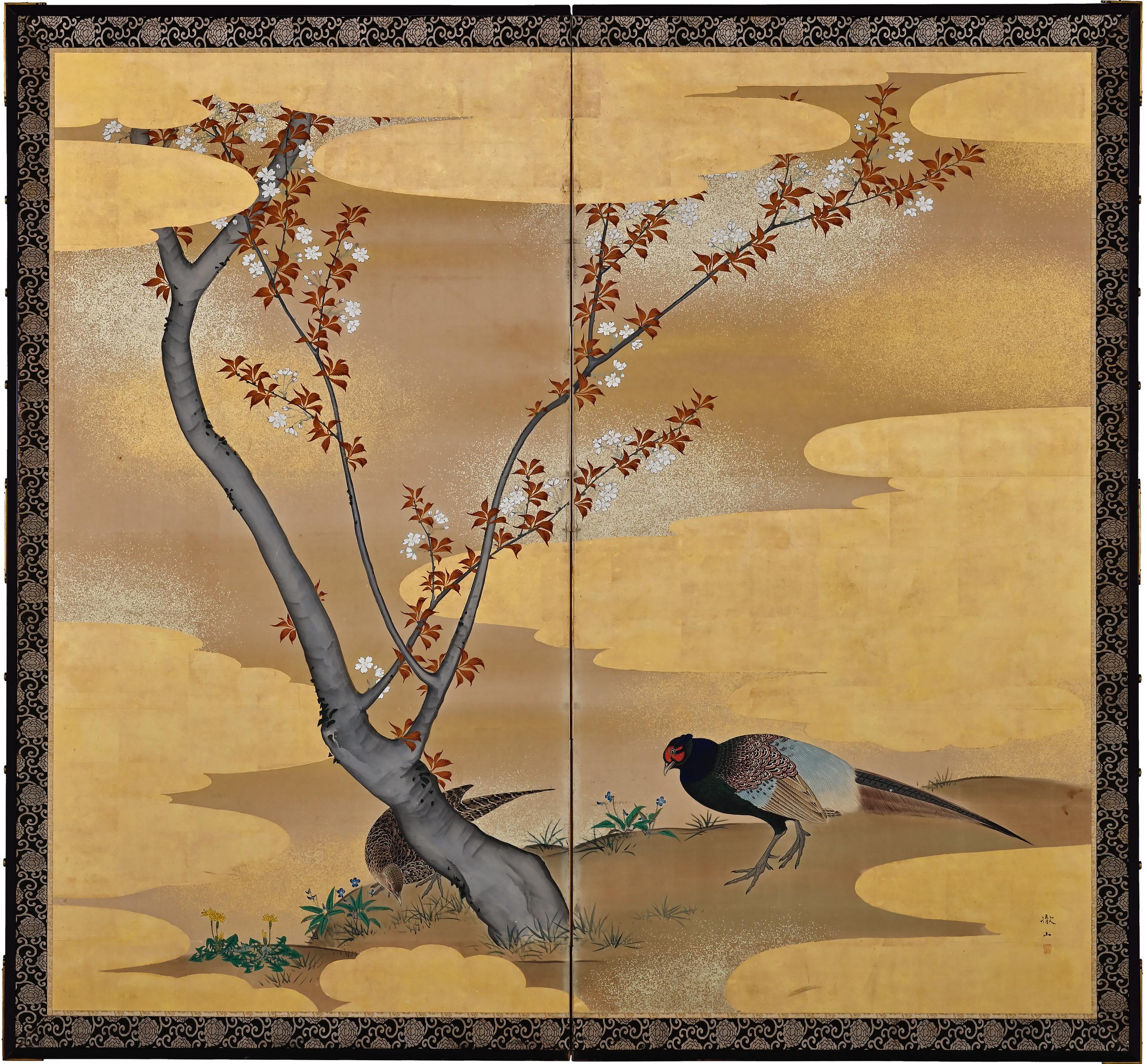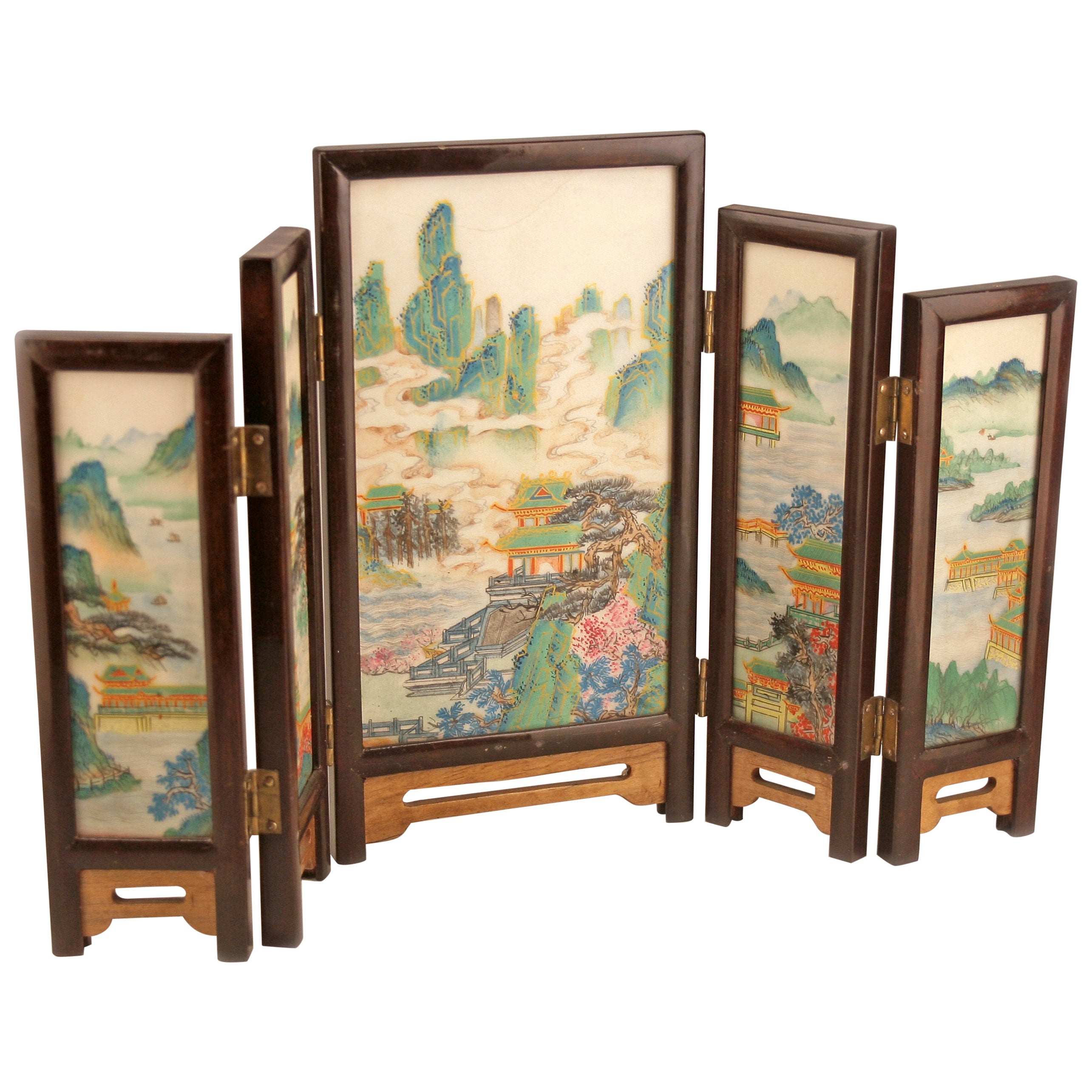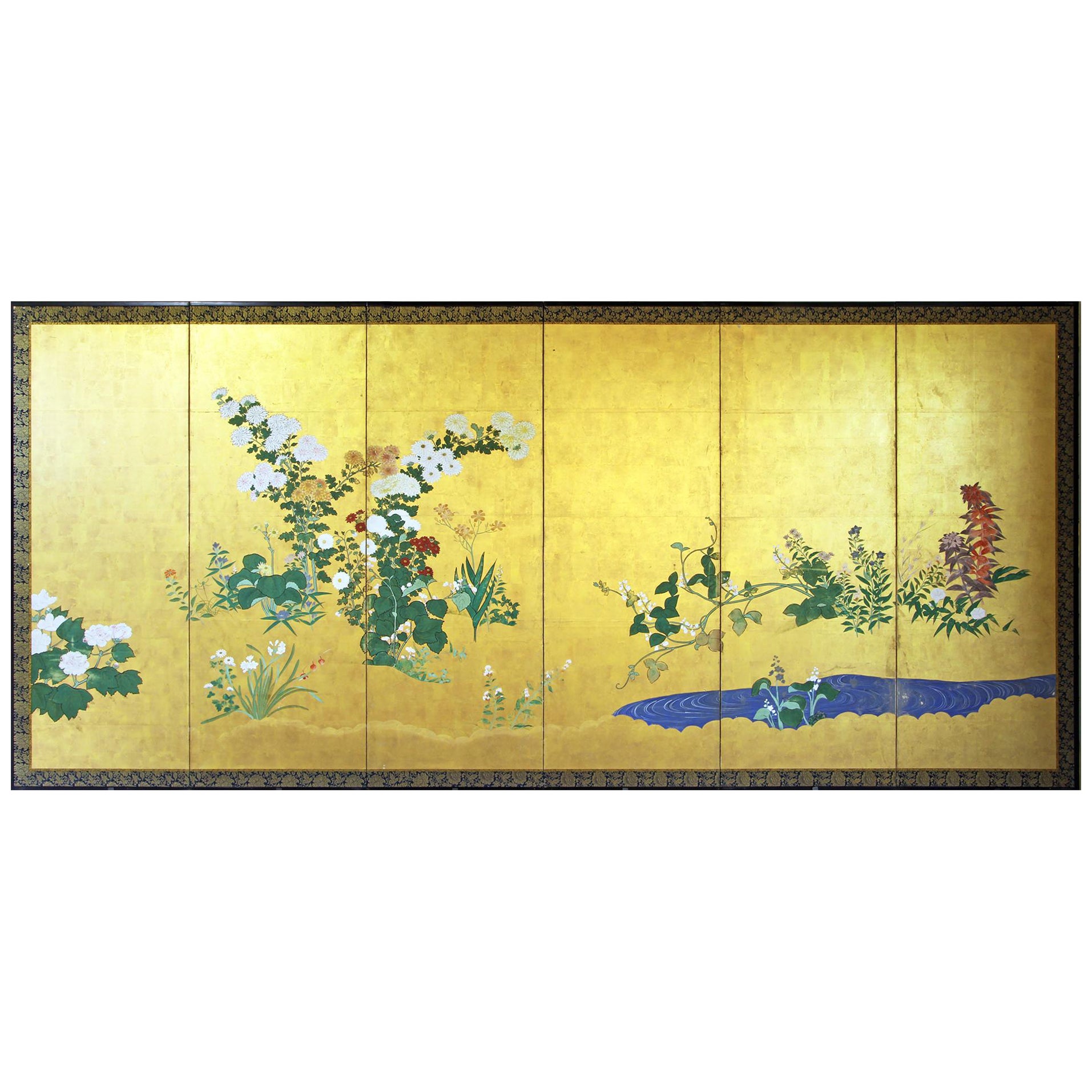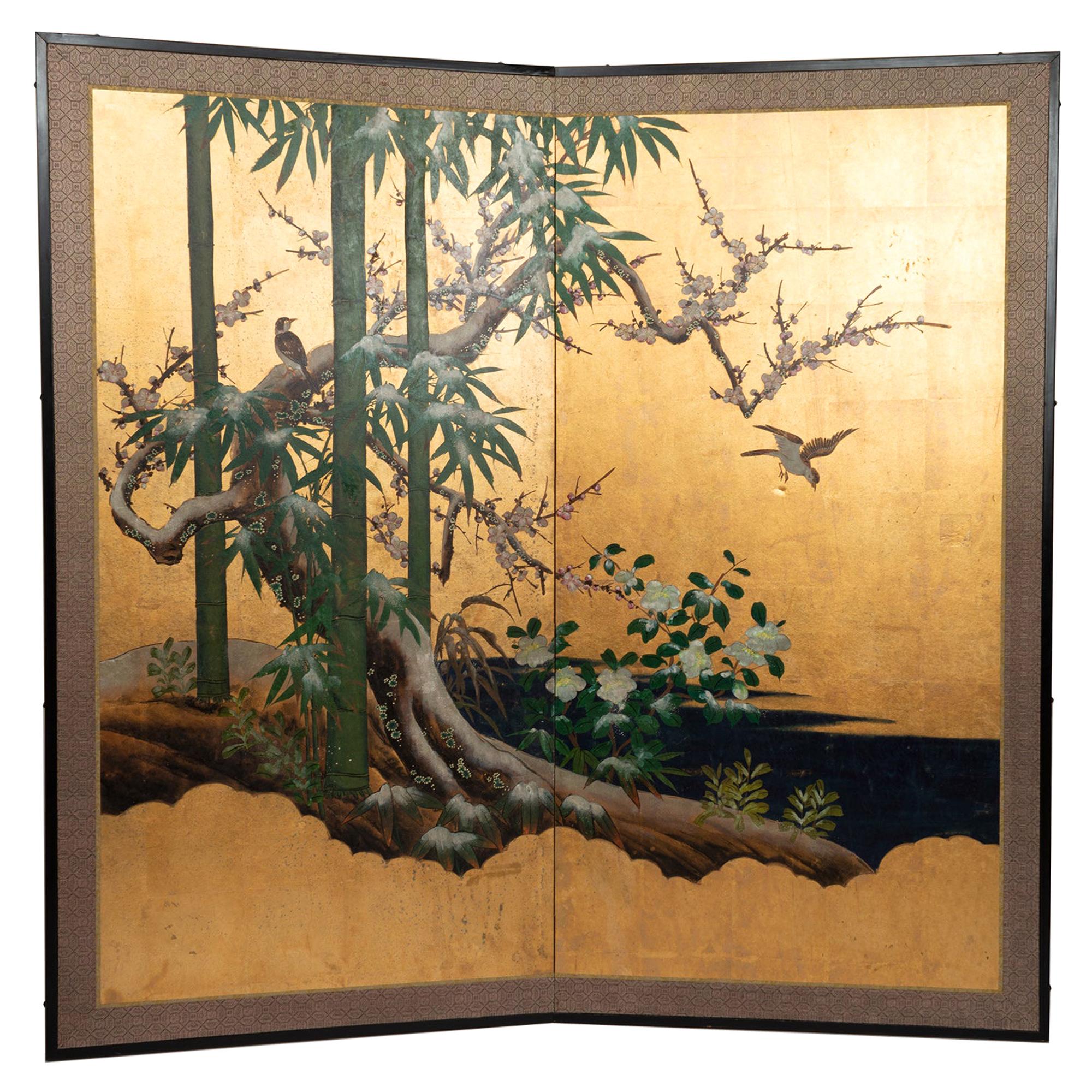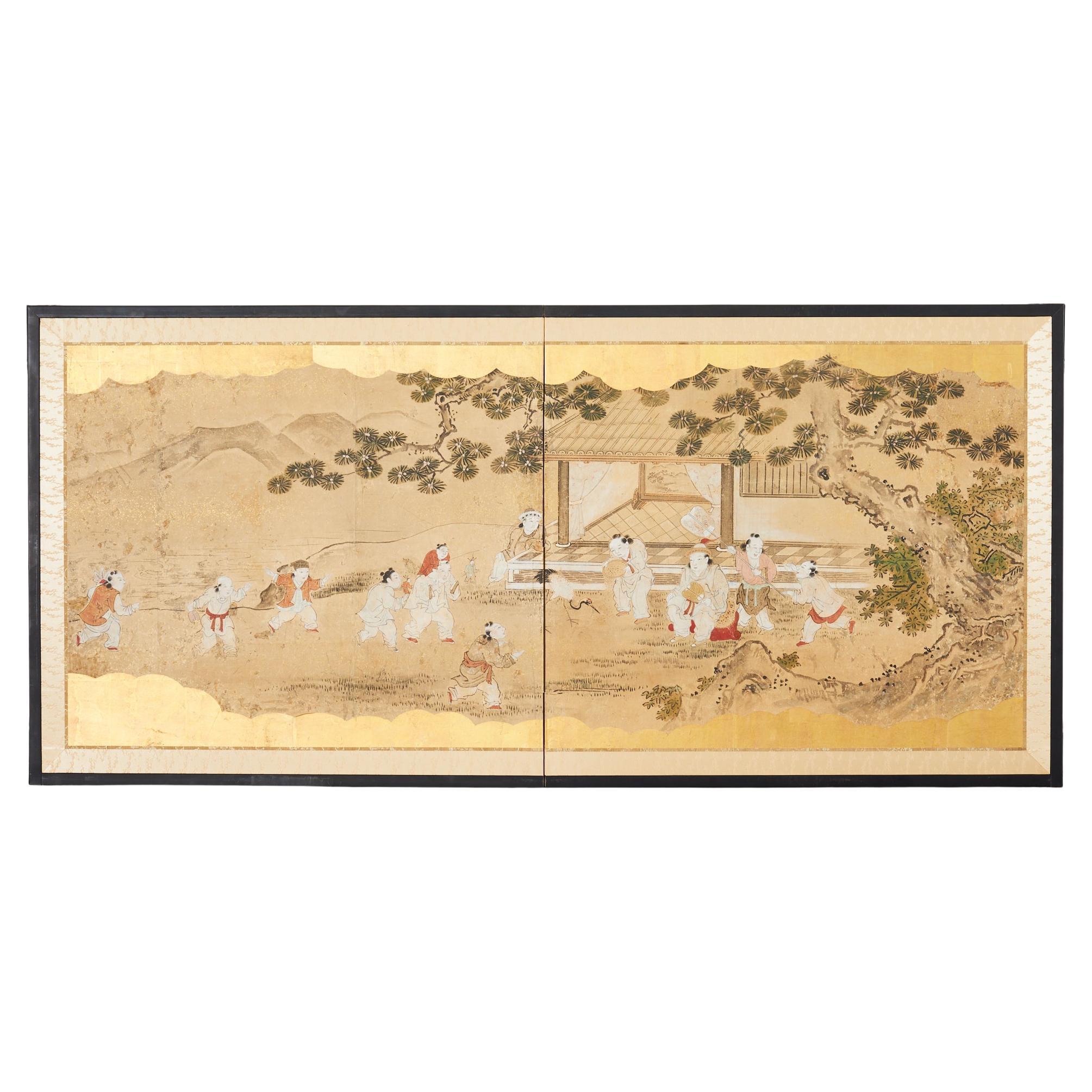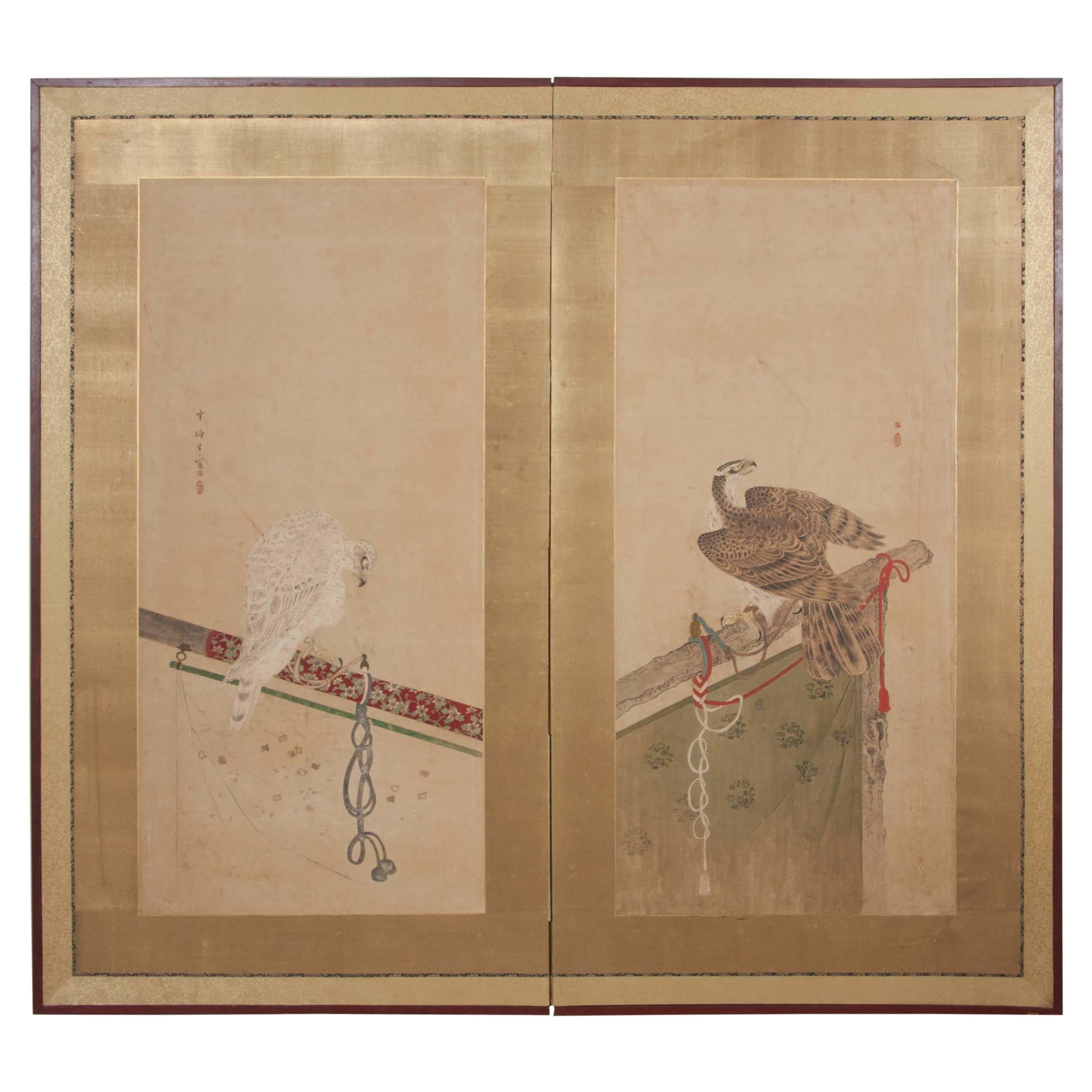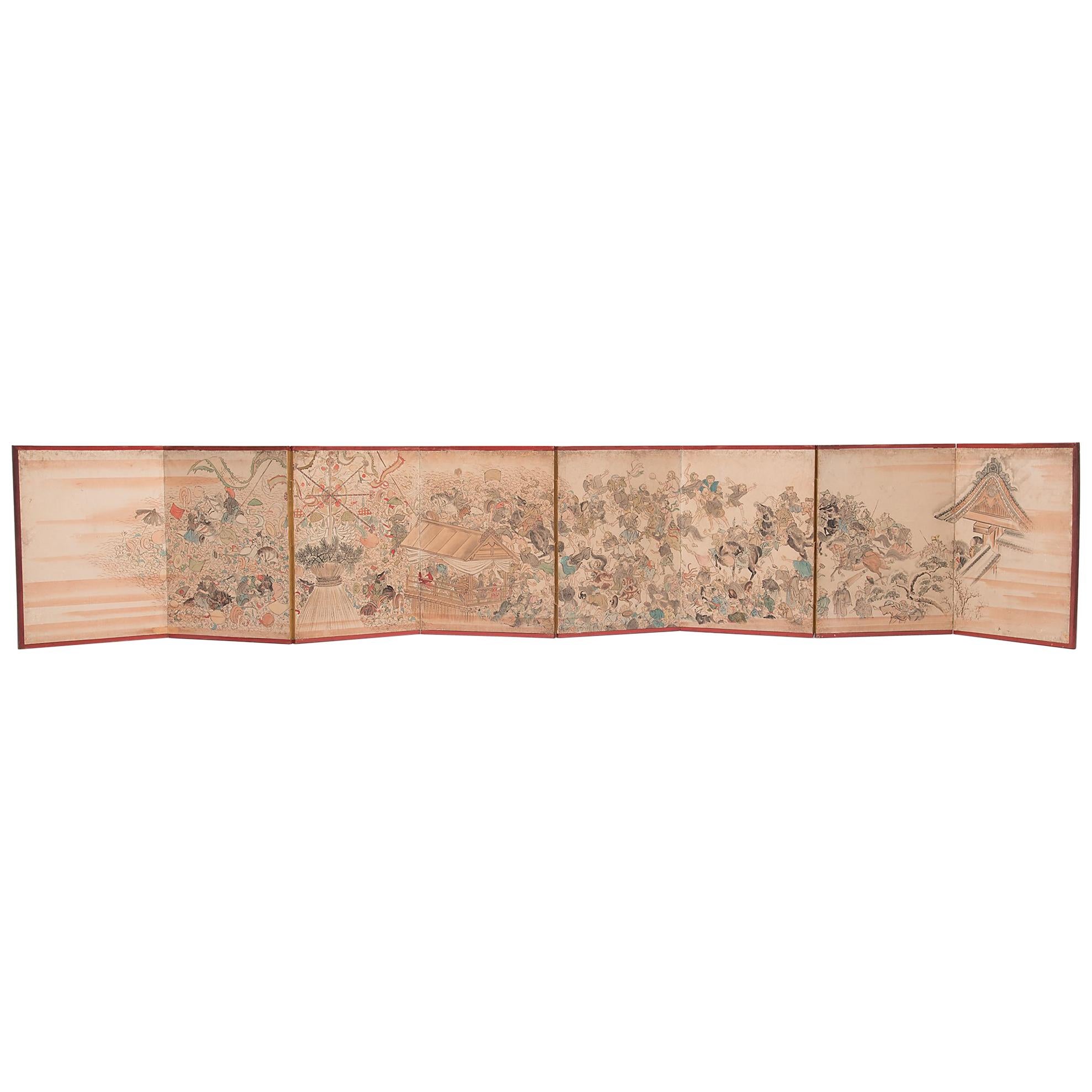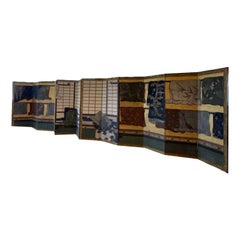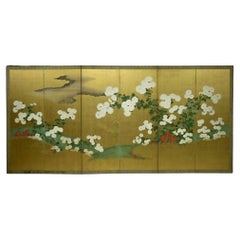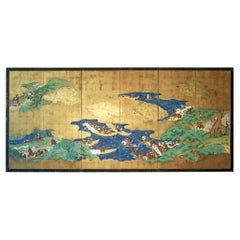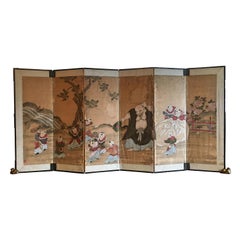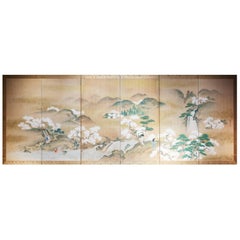
Late 19th Century, Japanese Folding Screen, Cherry Blossom Design, Edo Period
View Similar Items
1 of 5
Late 19th Century, Japanese Folding Screen, Cherry Blossom Design, Edo Period
$25,000List Price
About the Item
- Dimensions:Height: 42.13 in (107 cm)Width: 110.24 in (280 cm)Depth: 0.79 in (2 cm)
- Style:Edo (Of the Period)
- Materials and Techniques:
- Place of Origin:
- Period:
- Date of Manufacture:1880
- Condition:Wear consistent with age and use.
- Seller Location:Central Hong-Kong, HK
- Reference Number:Seller: LS1191stDibs: LU2554310724613
Authenticity Guarantee
In the unlikely event there’s an issue with an item’s authenticity, contact us within 1 year for a full refund. DetailsMoney-Back Guarantee
If your item is not as described, is damaged in transit, or does not arrive, contact us within 7 days for a full refund. Details24-Hour Cancellation
You have a 24-hour grace period in which to reconsider your purchase, with no questions asked.Vetted Professional Sellers
Our world-class sellers must adhere to strict standards for service and quality, maintaining the integrity of our listings.Price-Match Guarantee
If you find that a seller listed the same item for a lower price elsewhere, we’ll match it.Trusted Global Delivery
Our best-in-class carrier network provides specialized shipping options worldwide, including custom delivery.You May Also Like
17th Century 'Late 1600s', Japanese Edo Period 12-Panel Folding Screen Painted
Located in North Miami, FL
A pair of 17th Century (Late 1600s) Japanese Edo screens made of 12-panels. This folding silk screen is painted on a gold leaf background. It has a...
Category
Antique 17th Century Japanese Edo Paintings and Screens
Materials
Silk, Wood, Paint, Paper
Late Edo Period Rinpa School Chrysanthemum Blossom Screen
By Rimpa School
Located in Fukuoka, JP
Late Edo Period Rinpa School Chrysanthemum Blossom Screen
Period: late Edo, early 19th century
Size: 364 x 172 cm (143 x 67 inches)
SKU: PTA13
This exquisite late Edo period Rinpa ...
Category
Antique 18th Century Japanese Edo Paintings and Screens
Materials
Paper
Edo 19th Century Japanese Folding Screen Six Panels Battle of Menpei
By Japanese Studio
Located in Brescia, IT
Samurai on horseback and by boat from the famous battle of Menpei Japanese folding screen six-panel of "Tosa School" painted with mineral pigments on vegetable on golden silk , earl...
Category
Antique Early 19th Century Japanese Edo Paintings and Screens
Materials
Gold Leaf
Japanese Six Panel Screen with Hotei, Edo Period, Early 19th Century
Located in Austin, TX
A delightful Japanese six panel painted paper screen featuring the beloved figure Hotei, Edo Period, early 19th century.
Hotei, called Budai in China, and known as the Laughing Buddha or Fat Buddha in the West, is considered to be an emanation of Maitreya, the Buddha of the Future.
In Japan, he also holds a special place as one of the Seven Lucky Gods, being the god of fortune, and protector of children.
He is always portrayed as a mirthful and corpulent man, dressed in loose robes that show off his round belly. He carries a sack with him, said to be filled with treasure. As the protector of children, he is often portrayed with them playing on or around him, as he is here. The children portrayed in this screen are dressed in Chinese style clothing...
Category
Antique Early 19th Century Japanese Edo Paintings and Screens
Materials
Silk, Paper
Early 19th Century Japanese Screen. Cherry Blossom & Pheasants by Mori Tetsuzan
Located in Kyoto, JP
Mori Tetsuzan (1775-1841)
Pheasants and Cherry Blossoms
Two-fold Japanese screen. Ink, color, gofun, gold and silver on paper.
A two-fold Japanese bir...
Category
Antique Early 19th Century Japanese Edo Paintings and Screens
Materials
Gold Leaf
19th C. Edo-Meiji Period Japanese Painted Five-Panel Folding Miniature Screen
Located in North Miami, FL
19th century/Edo-Meiji period japanese painted five-panel folding miniature screen
By: unknown
Material: lacquer, metal, paint, wood
Technique: carved, hand-carved, hand-painted, la...
Category
Antique 19th Century Japanese Meiji Paintings and Screens
Materials
Metal
Recently Viewed
View AllMore Ways To Browse
Cherry Blossom Screen
Japanese Screens Six Fold
Japanese Wood Fish
Japanese Cherry Blossom Screen
Antique Spring Scale
Japanese Screen Cherry
Japanese Cherry Tree Screen
Japanese Screen Cherry Tree
Japanese Screen Fish
Shogun Painting
Rare Antiquities
Han Dynasty
15th Century Japan
Vietnam Blue
Hong Kong Antique Furniture
Bronze Age Antiquities
Antique Furniture Vietnam
Antique Chinese Furniture Hong Kong
